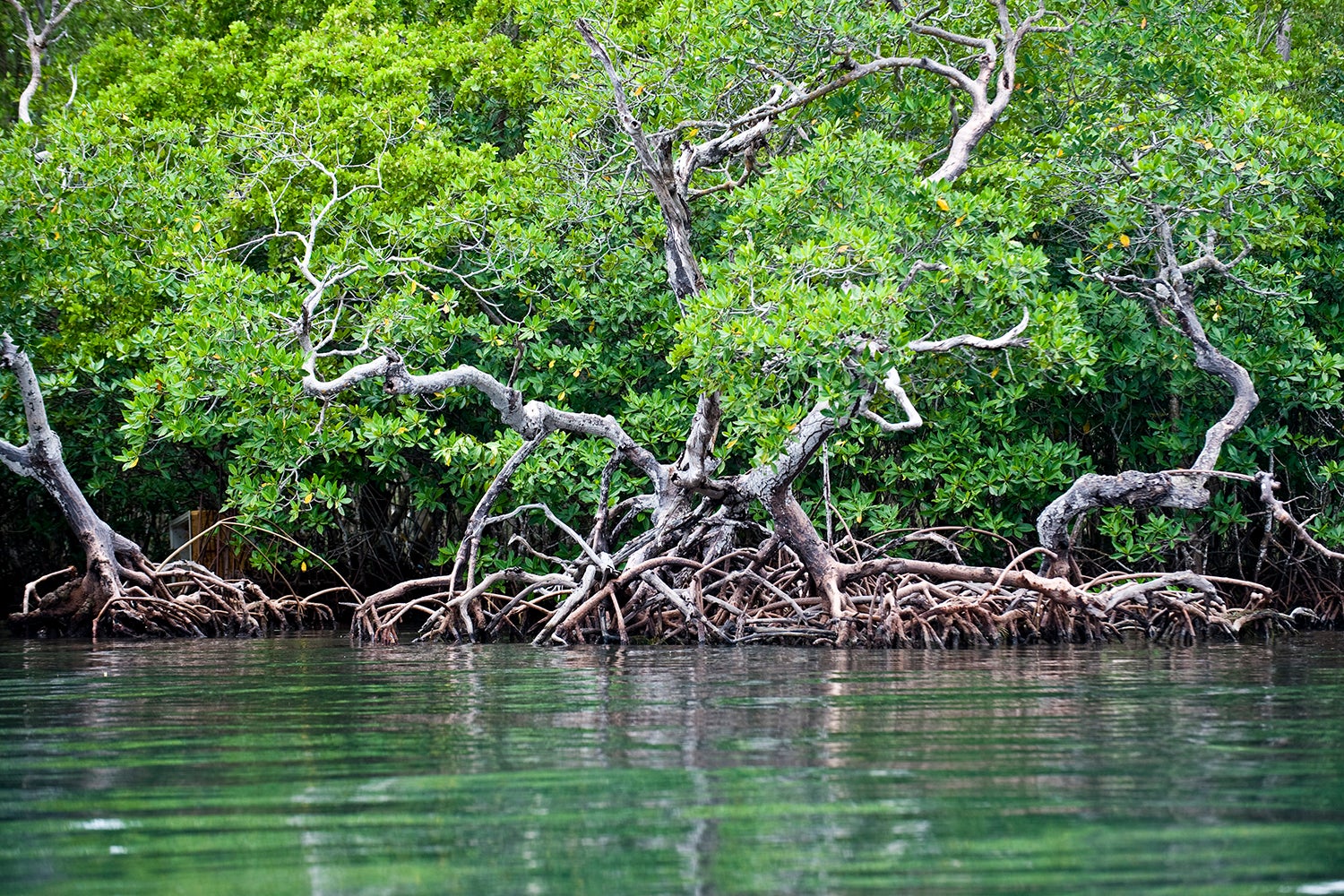Latin America
Related: About this forumQuantifying mangroves' value as a climate solution and economic engine
JUNE 1, 2023
A new approach quantifies the value of mangrove forests in Belize for carbon sequestration, tourism, fisheries, and coastal protection, then uses the values to target conservation and restoration. The findings hold lessons for coastal countries looking for ways to balance climate goals with economic development.
BY ROB JORDAN
Stanford Woods Institute for the Environment

Mangrove trees along the coast of Belize. (Image credit: ©Antonio Busiello / WWF)
A tiny Central American country is charting a path to slowing climate change, while boosting the economy and making communities safer. A new Stanford-led study quantifies the value of Belize’s coastal mangrove forests in terms of how much carbon they can hold, the value they can add to tourism and fisheries, and the protection they can provide against coastal storms and other risks. Importantly, the findings, published June 1 in Nature Ecology and Evolution, have already provided a basis for Belize’s commitment to protect or restore additional mangrove forests totaling an area about the size of Washington, D.C., by 2030. The approach holds lessons for many other coastal countries.
“The U.S. has one of the largest coastlines in the world, and extensive wetlands,” said study lead author Katie Arkema, a scientist at the Stanford Natural Capital Project at the time of the research, now at the Pacific Northwest National Laboratory and the University of Washington. “This paper offers an approach we could use for setting evidence-based climate resilience and economic development goals.”
Many countries have been struggling to meet their international climate commitments. Nature-based solutions, such as locking up or sequestering carbon in mangroves, seagrasses, and salt marshes, provide a promising solution – they help nations reduce their greenhouse gas emissions and also adapt to climate change. Yet, major coastal countries, including the U.S., have largely overlooked these so-called blue carbon strategies. The oversight is due in part to the complexity of calculating how much carbon wetlands and other coastal ecosystems can sequester, and where to implement these strategies to maximize co-benefits for the economy, flood risk reduction, and other sectors.
Maximizing benefits
Working together with other scientists, as well as Belizean policymakers and stakeholders, the researchers quantified carbon storage and sequestration using land cover data from Belize and field estimates from Mexico. They quantified coastal flood risk reduction, tourism, and fisheries co-benefits by modeling related services – such as lobster breeding grounds – provided by mangroves currently and under future protection and restoration scenarios at various locations.
More:
https://news.stanford.edu/2023/06/01/mangroves-value/